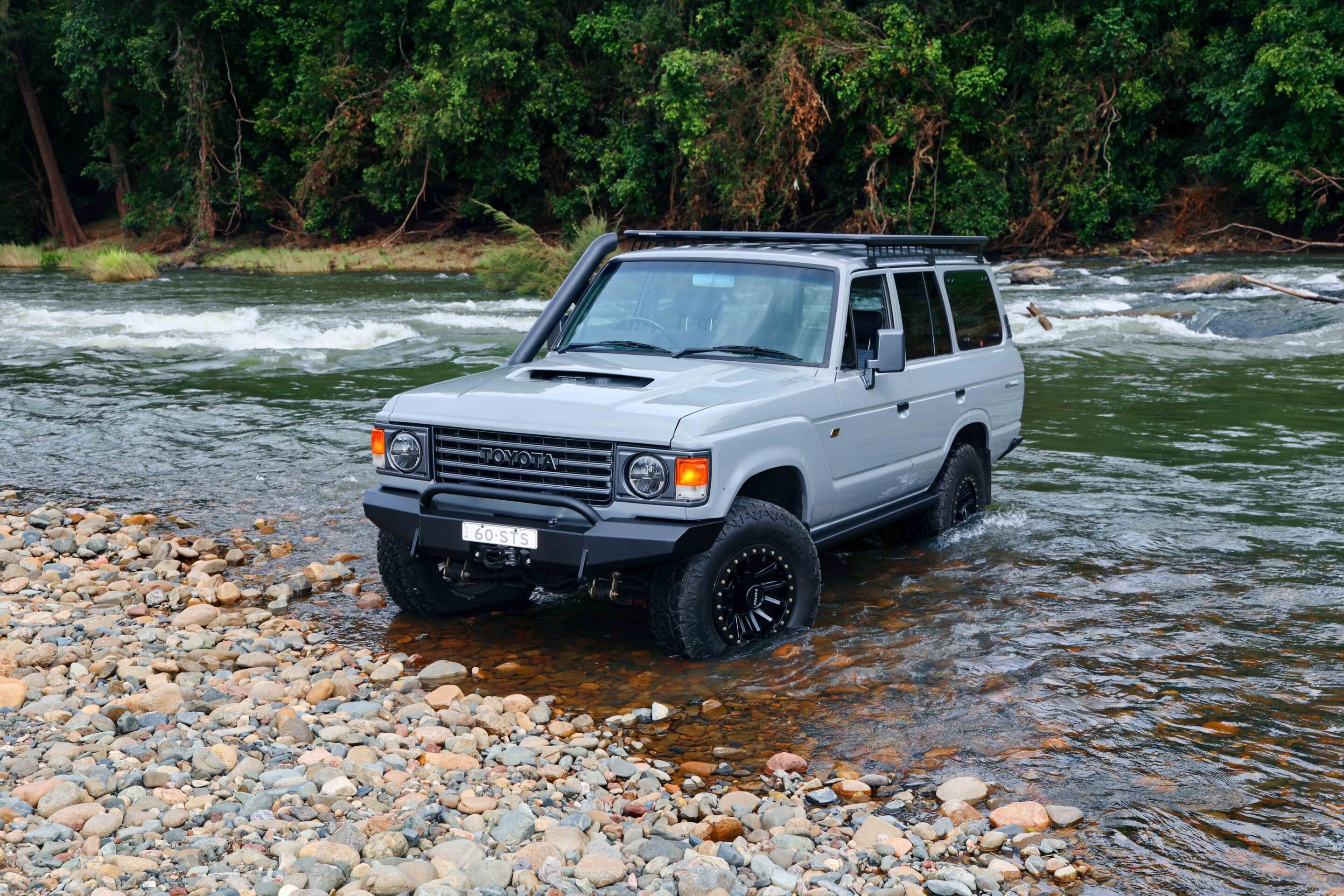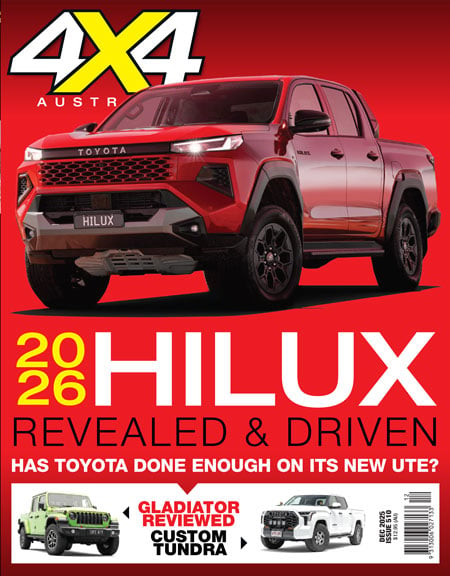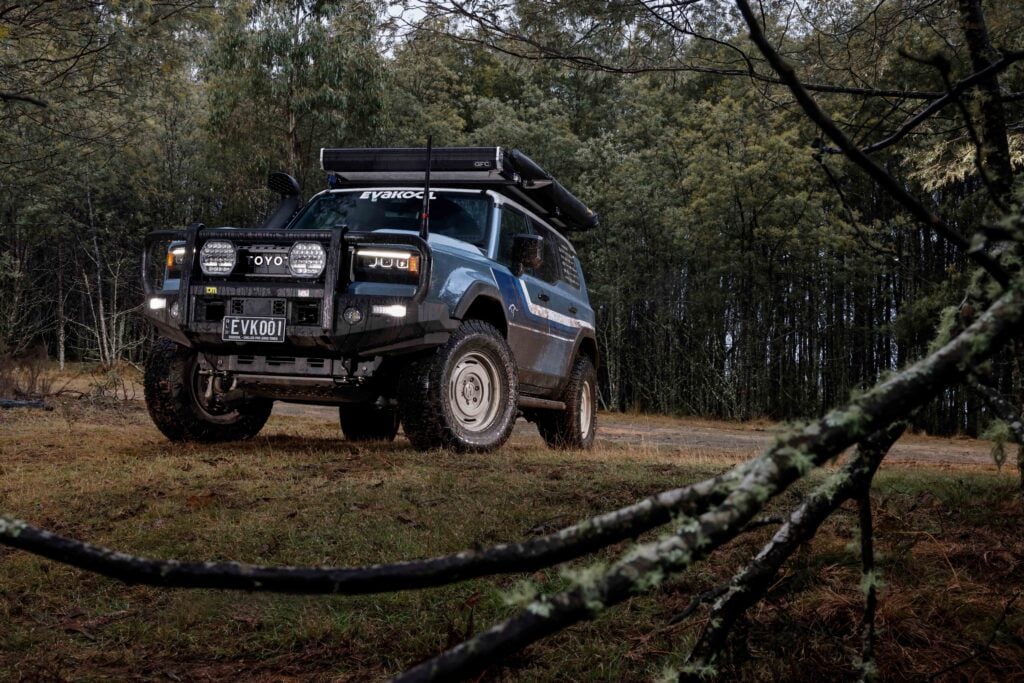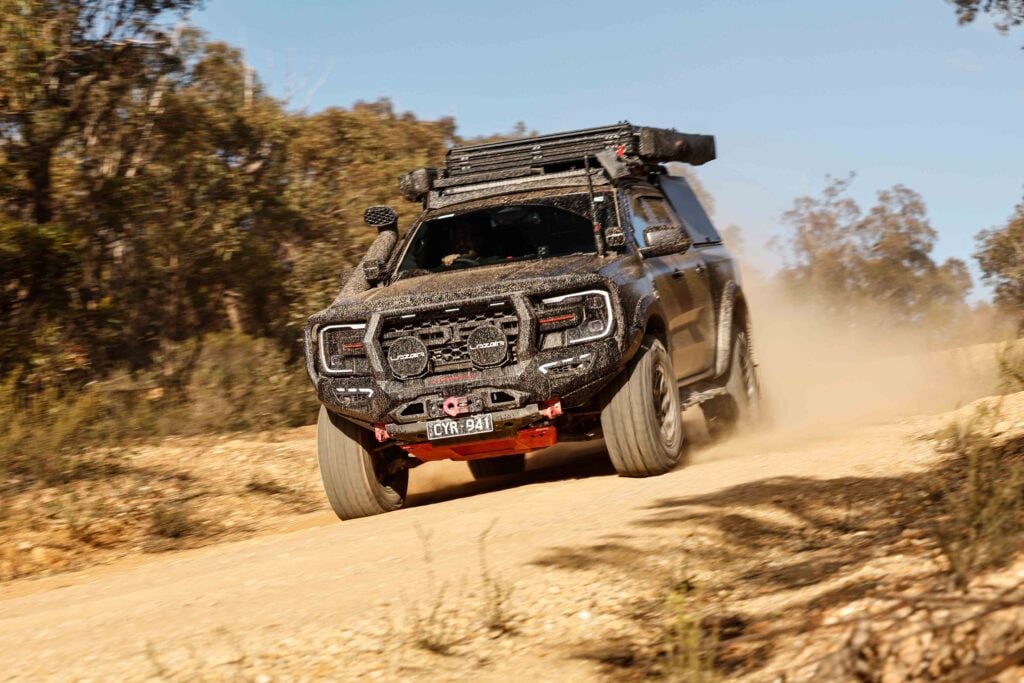Way back in 1985 Toyota created this FJ62 complete with a four-speed auto and the not-so-mighty 4.0-litre 3F petrol boat anchor that wheezed asthmatic output.
Anti-rust prevention was minimal, the suspension was comparable to a cart, the design and looks were basic… yet it was a rugged wagon. Although this particular 60 Series was more likely than not destined for the graveyard, Adam had other ideas and set about its resurrection, but with a very different route compared to most other restorations.
Minimal fuel use, a comfortable ride, surplus power, some high-tech wizardry and the adoption of some cool old-school paint and panel modifications were to be the order of the day.
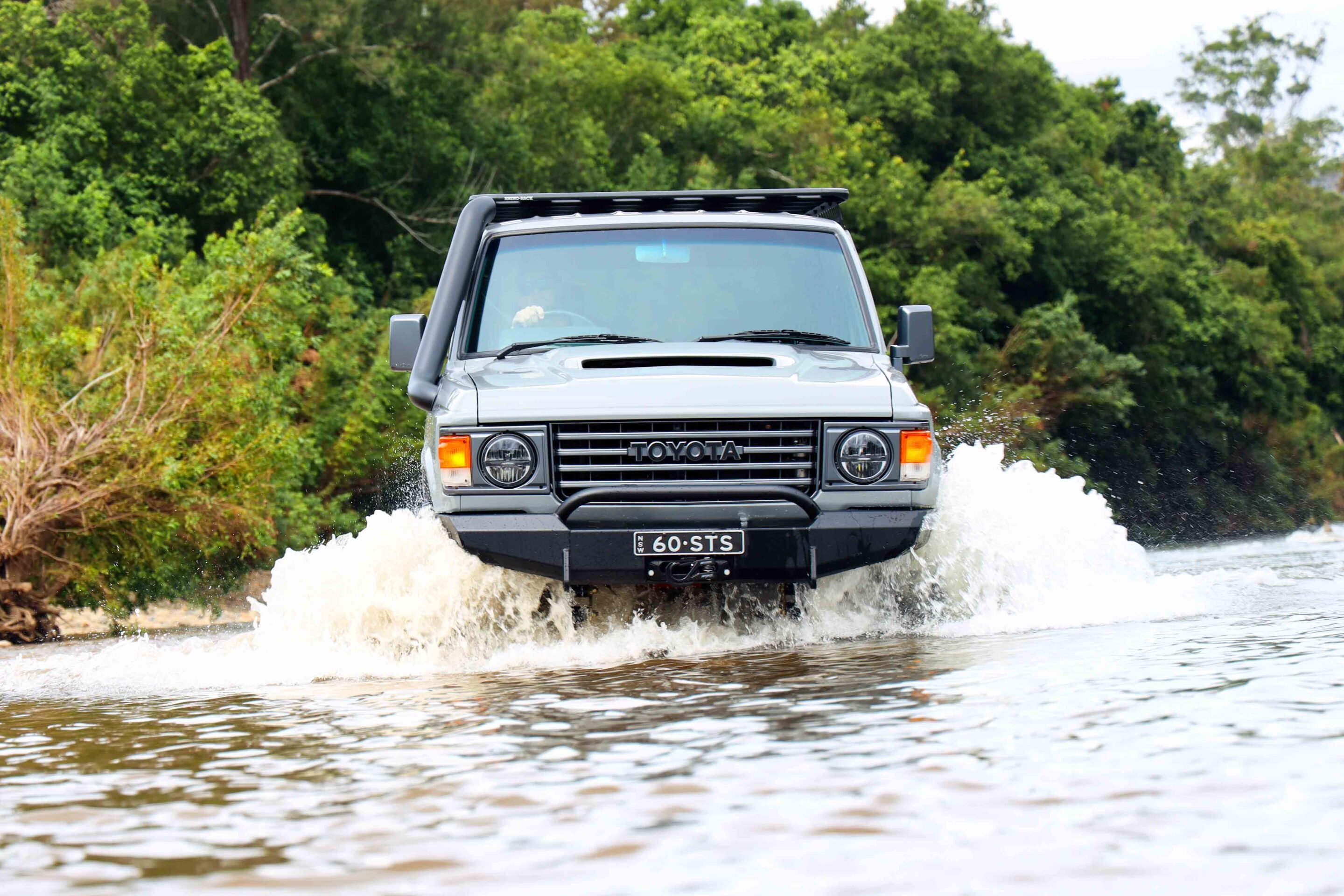
Isuzu 4JJ1 3.0-litre engine transplant
Nope, a thumping petrol V8 wouldn’t be transplanted into this old body, nor would a large-capacity Toyota diesel be squeezed between the rails. Rather Adam and James opted for a well-proven, smaller intercooled turbo diesel engine from an Isuzu D-Max.
The renowned 4JJ1 3.0-litre engine was chosen for the Cruiser’s heart transplant. Even its standard 130kW and 380Nm is a huge leap up from the old Toyota engine (115kW/298Nm), and there are easy aftermarket enhancements to double the outputs, while overall reliability and efficiency, plus the engine’s compact size, all make it a great engine transplant for not only this older Cruiser, but many other makes and models.
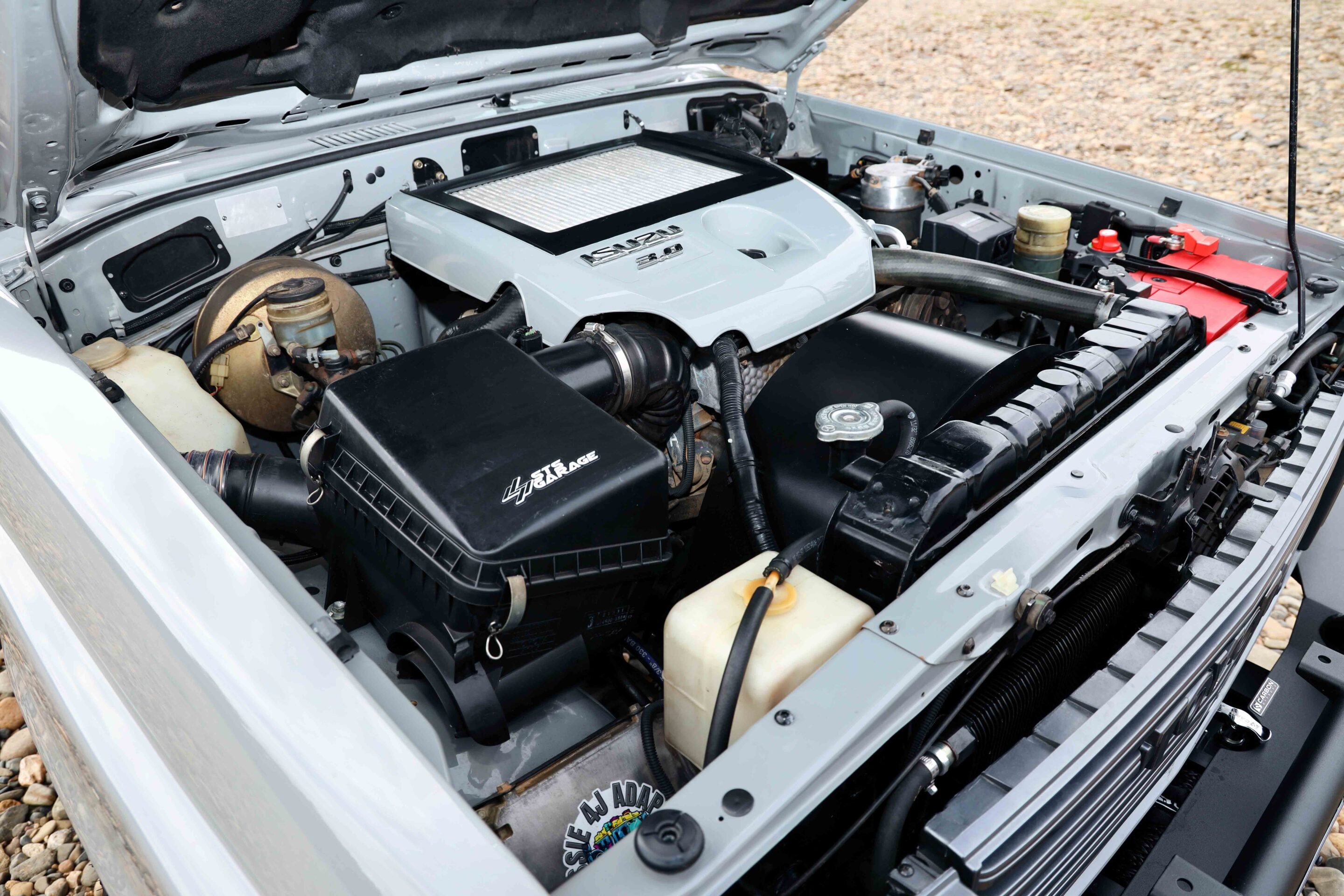
Sacrilege or sanctification for combining a legendary Toyota body with a modern, small-capacity diesel engine? You be the judge. For us, it’s a winner all round, and given the minimal weight variance between the outgoing and incoming engines, it saves a lot of suspension and brake work. A thumbs-up from us.
Adam picked up a complete 2011 D-MAX from the wreckers to make life easier and save some money. Aside from a mild remap to boost performance, Adam reports that the vehicle returns about 9.9L/100km and hauls better than his 4.5-litre 79 Series Cruiser. Wow! Power, acceleration, driveability and economy all rolled into one. Immaculate conception perhaps?
Driveline changes
It’s all very well having a replacement engine for a project but that’s only a small part of the overall plan. The ancillaries, gearbox, transfer case, electrics and physical fitting of the engine and all other components are where the hard work and magic happen.
Adam has managed to keep the Cruiser’s four-speed shifter mechanism adapted to the four-speed A340 out of the D-Max and mated it to a 70 Series transfer case via an Aussie 4j Adaptors housing. A standard 60 Series tail shaft and lovechild of a 60/79 front shaft sends drive to the 60 Series diffs. The 79 transfer lever enters the cabin via the factory transmission tunnel hole. The standard brake pedal is retained, while the D-Max drive-by-wire accelerator pedal has been grafted in via custom-fabricated brackets.
Fitting the engine to the Cruiser chassis was achieved by cutting the D-Max engine mounts and grafting to the 60 Series chassis. The D-Max wiring harness is a custom job from Aussie 4j Adaptors, which then blends into the standard Cruiser dash cluster via an unlocked, standard D-Max engine management system.
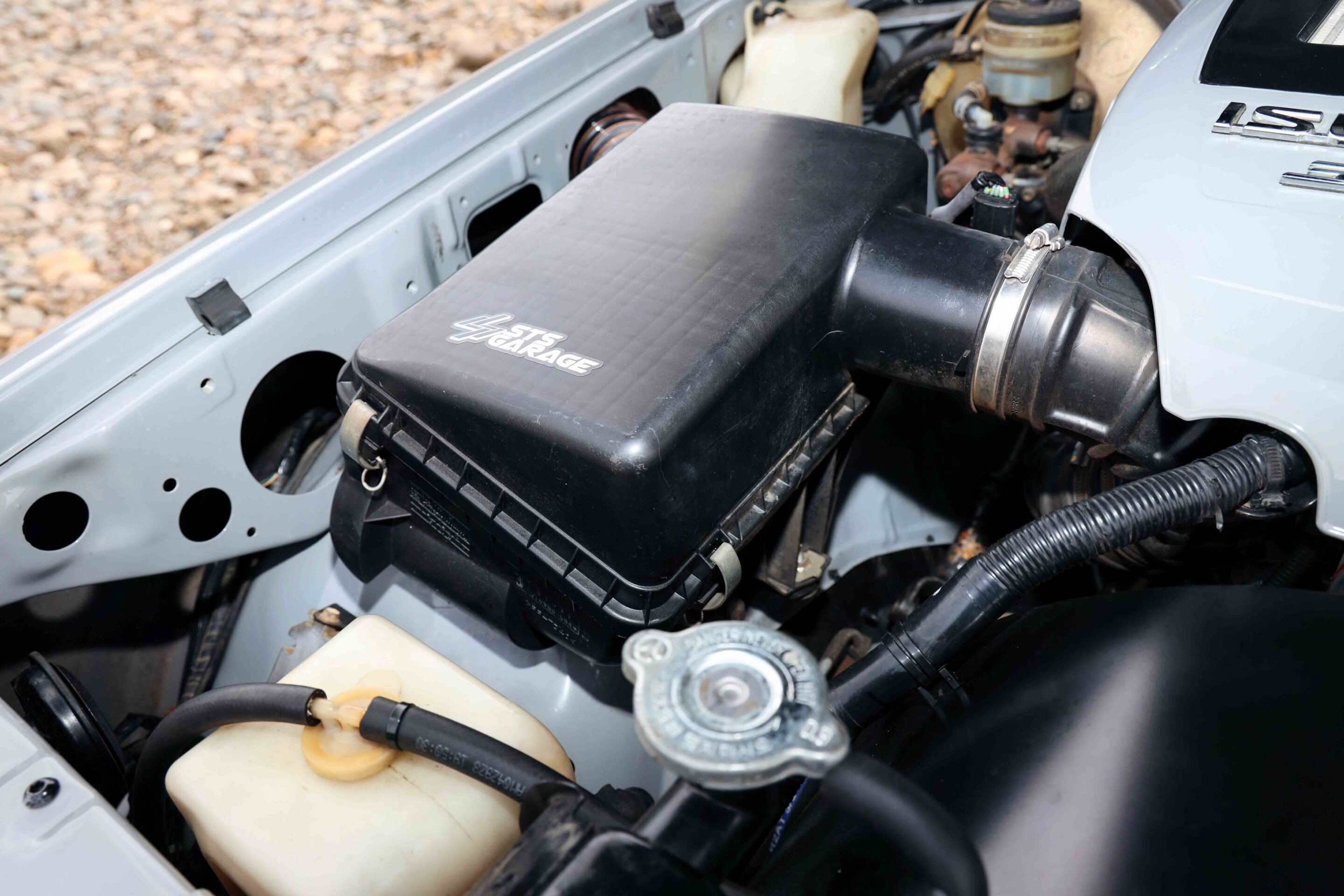
A JMAX Engineering black powder-coated snorkel feeds air into a 79 Series airbox, which was modified to take the D-Max MAF sensor. The air conditioning condenser, power steering pump and various engine bay piping was all retrieved from the D-Max and squeezed into the Cruiser. That’s a huge reason to purchase a complete donor vehicle rather than just an engine and ’box for transformations like this. The myriad of large and small parts that can be used saves time and money. Many brackets and parts, like the steel fan shroud, have been custom fabricated on the run to keep the conversion safe and legal.
A set of 285/70R17 Predator New Mutant X-AT tyres have been wrapped around 17×9 ROH Zullo alloy rims. The leaf-spring packs have had an extra leaf installed for a little more carrying capacity yet maintain as much comfort as a leaf-sprung 4×4 can offer. The rears also feature Boss airbags to cater for varying loads, plus both ends score EFS shock absorbers.
Stedi LED headlights are an excellent replacement for the standard glow-in-the-dark-style candles. A Carbon synthetic rope winch, with its control box relocated under the bonnet, gives a neat, clutter-free, minimalist front end. The only hint of there being a winch is the fairlead with hook, plus the slight protrusion of the clutch engagement handle.
Panel work
Casual glances by the untrained eye will only see a standard 60 Series Cruiser. Normal, but clean and tidy.
Those in the know will spend much time picking both small and large discrepancies from the original body. The obvious is the 79 Series bonnet scoop, which offers the only telltale of an engine swap via the letterbox opening, where you can spy the chromed Isuzu 3.0 badging.
All door locks, fuel flap lock, rear wiper and washer, and antennas have been eliminated, resulting in clean, smoothed-out panel work. Access is gained via factory central locking actuators combined with a Viper remote central locking system. A Mitsubishi Triton fuel flap release mechanism has also been grafted into the inside of the fuel flap to access the fuel filler.
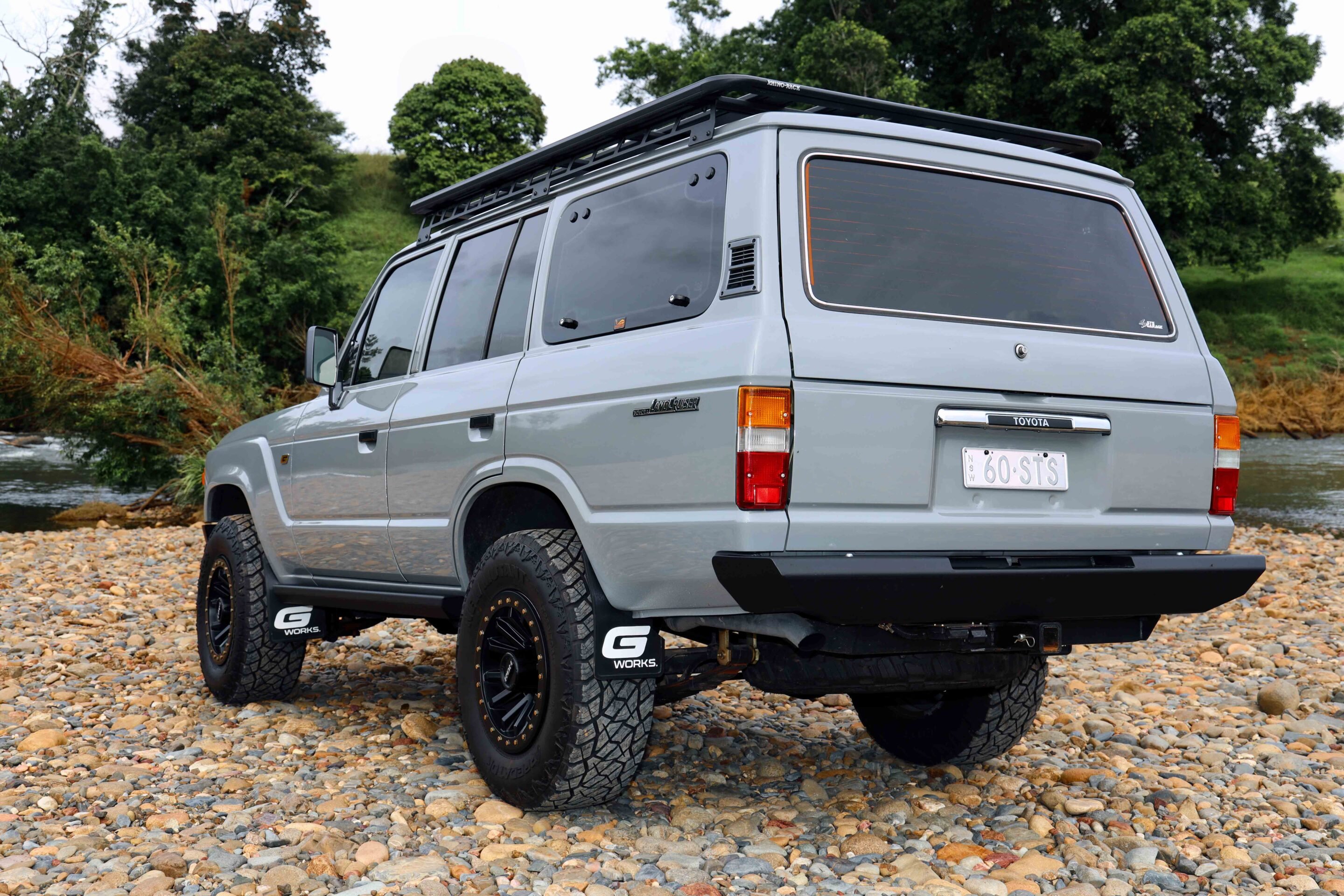
The front quarter panels have been chopped to allow for the customised McKinnon’s Cruisers bullbar, which gives a modernised OE appearance. Adam knocked up custom side steps/rock sliders to protect the sills and a rear bar to protect the Cruiser’s trailing end, both of which look perfectly modern on the old Cruiser body. It’s a great blend of classical heritage and modern design cues.
A Rhino-Rack roof platform sits atop custom roof rack gutter mounts, finishing off the exterior of what appears to be a brilliant custom and perfectly usable touring 4×4. A pair of rear side-opening Emuwing Gullwing glass windows provide easy access to the Cruiser’s rear luggage compartment.
The final touches of Skoda grey have been applied to a meticulously prepared body, albeit after a lot of rust removal. Colour-coded finishing touches to the engine cover, plus custom dark gunmetal grey to the Toyota grille perfectly finish the project, making it a true one-of-a-kind standout vehicle. So stand out, in fact, that it scored best modified 60 Series at the recent Classic Landcruiser Expo & Car Show (CLECS) in Queensland.
Verdict
The end result is an amazing amalgamation of old and new parts and technology… a combination that returns an improved driving experience in every way to that of the old. It is a head-turning custom body that has been a labour of love for Adam and not possible without James.
We recommend
-
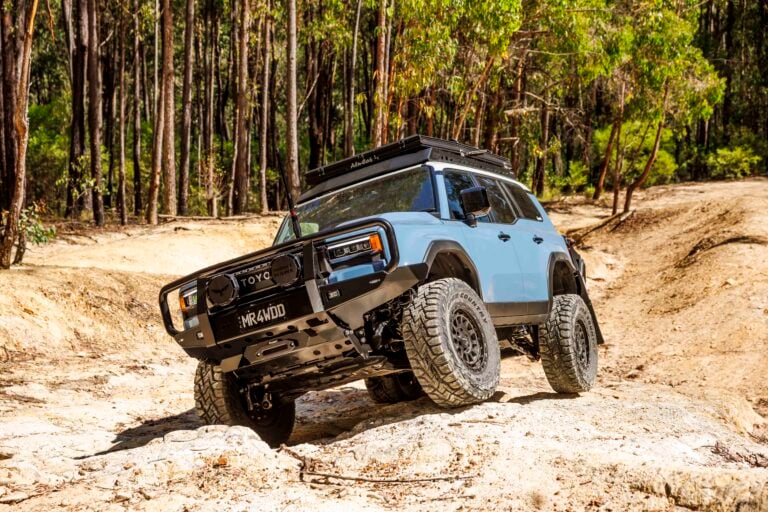 Custom 4x4s
Custom 4x4sMr 4WD turns the new Prado 250 Altitude into a touring beast
A bold build transforms Toyota’s latest Prado into a go-anywhere adventure rig
-
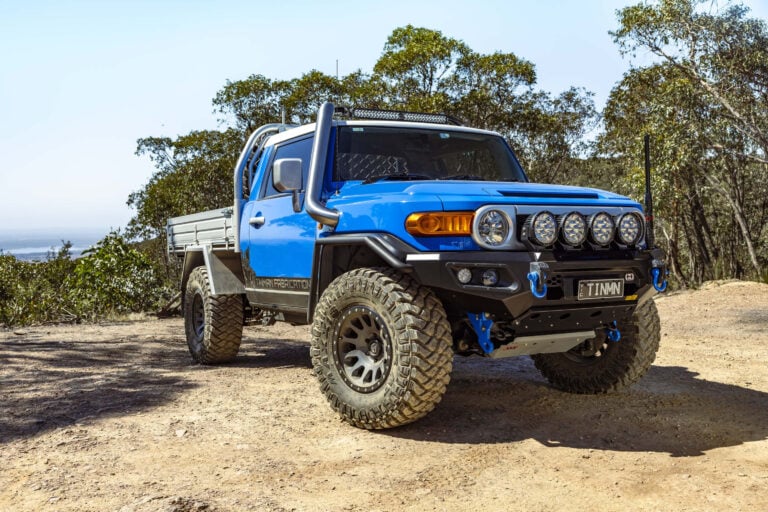 Custom 4x4s
Custom 4x4sChopped FJ Cruiser is the world's coolest farm truck
Chopped, stretched and turned into what some might describe as a quirky farm truck… but it’s also a daily driver and a handy off-road weapon

